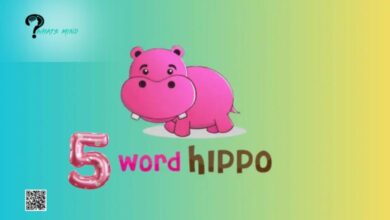Have you ever wondered about the intriguing origins behind Halloween? Why do we carve pumpkins, dress up in costumes, and go trick-or-treating? Halloween Background Join me on a journey through the mysterious and fascinating background of Halloween, where we’ll uncover the ancient traditions, cultural influences, and modern customs that make this holiday so halloween background beloved.
The Ancient Roots of Halloween
Halloween
To truly understand Halloween, we must travel back in time to ancient Celtic traditions. The origins of Halloween can be traced to the Celtic festival of Samhain, which marked the end of the harvest season and the beginning of winter. Durinhalloween backgroundg Samhain, Celts believed that the boundary between the living and the dead was blurred, allowing spirits to roam the earth.
Samhain: The Original Halloween
Samhain was a time of both celebration and superstition. Bonfires were lit to ward off evil spirits, and offerings of food and drink were left outside to appease the wandering souls. People also wore costumes, often made from animal skinshalloween background, to disguise themselves from malevolent spirits.
Christian Influence: All Saints’ Day
With the spread of Christianity, pagan festivals like Samhain were often incorporated into Christian holidays. In the 8th century, Pope Gregory III designated November 1st as All Saints’ Day, a time to honor saints and martyrs. The evening before became halloween background known as All Hallows’ Eve, eventually shortened to Halloween.
Jack-o’-Lanterns: From Turnips to Pumpkins
One of the most iconic symbols of Halloween is the jack-o’-lantern. But did you know that the tradition originated in Ireland with turnips instead of pumpkins? According to legend, a man named Jack, doomed to wander the earth with only a burning coal inside a hollowed turnip to light his way, inspired the tradition. When Irish immigrants brought the custom to America, they discovered that pumpkins, native to the region, made for excellent lanterns, thus givihalloween backgroundng rise to the familiar jack-o’-lantern.
Trick-or-Treating: A Medieval Tradition
The practice of trick-or-treating has roots in medieval Europe. During All Souls’ Day parades, poor citizens would beg for food in exchange for praying for thhalloween backgrounde souls of the giver’s deceased relatives. This tradition, known as “souling,” eventually evolved into the modern-day custom of children going door-to-door, collecting candy in exchange for the threat of a trick.
Witches, Ghosts, and Ghouls: Halloween Characters
Halloween wouldn’t be complete without its cast of spooky characters. From witches stirring cauldrons to ghosts haunting old houses, these iconic figures hhalloween backgroundave been a part of Halloween lore for centuries. The imagery of Halloween draws from a mix of cultural influences, including European folklore, literature, and Hollywood movies.
Modern Halloween: A Cultural Phenomenon
Today, Halloween has evolved into a global phenomenon celebrated in various ways around the world. In addition to traditional customs like costume parties and hhalloween backgroundaunted houses, Halloween has become big business, with retailers selling everything from elaborate costumes to themed decorations.
Halloween Around the World
While Halloween is most commonly associated with American traditions, many other countries have their own unique ways of celebrating the holiday. In Mexico, Dihalloween backgrounda de los Muertos, or Day of the Dead, is a vibrant celebration honoring deceased loved ones with colorful altars, marigold flowers, and sugar skulls. In Japan, Halloween has been embraced as a fun, costume-filled event, albeit with less emphasis on the spooky and more on the cute.
The Future of Halloween
As our world continues to change and evolve, so too will the celebration of Halloween. With the rise of technology, we may see new innovations in interactivehalloween background haunted experiences or virtual reality trick-or-treating. However, no matter how Halloween may evolve in the future, its rich history and enduring traditions will continue to captivate and enchant us for generations to come.
Conclusion
So, the next time you don your costume or carve a pumpkin, take a moment to appreciate the centuries of history and tradition that have shaped Halloween into the beloved holiday it is today. From ancient Celtic rituals to modern-day celebrations, Halloween’s background is as diverse and fascinating as the costumes we wear and the treats we enjoy. Embrace the spooky spirit, and let the magic of Halloween transport you to a world where ghosts roam free, witches cast spells, and jack-o’-lanterns glow in the night. Happy Halloween!
Have you ever wondered about the intriguing origins behind Halloween? Why do we carve pumpkins, dress up in costumes, and go trick-or-treating? Join me on a journey through the mysterious and fascinating background of Halloween, where we’ll uncover the ancient traditions, cultural influences, and modern customs that make this holiday so beloved.
The Ancient Roots of Halloween
To truly understand Halloween, we must travel back in time to ancient Celtic traditions. The origins of Halloween can be traced to the Celtic festival of Samhain, which marked the end of the harvest season and the beginning of winter. During Samhain, Celts believed that the boundary between the living and the dead was blurred, allowing spirits to roam the earth.
Samhain: The Original Halloween
Samhain was a time of both celebration and superstition. Bonfires were lit to ward off evil spirits, and offerings of food and drink were left outside to appease the wandering souls. People also wore costumes, often made from animal skins, to disguise themselves from malevolent spirits.
Christian Influence: All Saints’ Day
With the spread of Christianity, pagan festivals like Samhain were often incorporated into Christian holidays. In the 8th century, Pope Gregory III designated November 1st as All Saints’ Day, a time to honor saints and martyrs. The evening before became known as All Hallows’ Eve, eventually shortened to Halloween.
Jack-o’-Lanterns: From Turnips to Pumpkins
One of the most iconic symbols of Halloween is the jack-o’-lantern. But did you know that the tradition originated in Ireland with turnips instead of pumpkins? According to legend, a man named Jack, doomed to wander the earth with only a burning coal inside a hollowed turnip to light his way, inspired the tradition. When Irish immigrants brought the custom to America, they discovered that pumpkins, native to the region, made for excellent lanterns, thus giving rise to the familiar jack-o’-lantern.
Trick-or-Treating: A Medieval Tradition
The practice of trick-or-treating has roots in medieval Europe. During All Souls’ Day parades, poor citizens would beg for food in exchange for praying for the souls of the giver’s deceased relatives. This tradition, known as “souling,” eventually evolved into the modern-day custom of children going door-to-door, collecting candy in exchange for the threat of a trick.
Witches, Ghosts, and Ghouls: Halloween Characters
Halloween wouldn’t be complete without its cast of spooky characters. From witches stirring cauldrons to ghosts haunting old houses, these iconic figures have been a part of Halloween lore for centuries. The imagery of Halloween draws from a mix of cultural influences, including European folklore, literature, and Hollywood movies.
Modern Halloween: A Cultural Phenomenon
Today, Halloween has evolved into a global phenomenon celebrated in various ways around the world. In addition to traditional customs like costume parties and haunted houses, Halloween has become big business, with retailers selling everything from elaborate costumes to themed decorations.
Halloween Around the World
While Halloween is most commonly associated with American traditions, many other countries have their own unique ways of celebrating the holiday. In Mexico, Dia de los Muertos, or Day of the Dead, is a vibrant celebration honoring deceased loved ones with colorful altars, marigold flowers, and sugar skulls. In Japan, Halloween has been embraced as a fun, costume-filled event, albeit with less emphasis on the spooky and more on the cute.
The Future of Halloween
As our world continues to change and evolve, so too will the celebration of Halloween. With the rise of technology, we may see new innovations in interactive haunted experiences or virtual reality trick-or-treating. However, no matter how Halloween may evolve in the future, its rich history and enduring traditions will continue to captivate and enchant us for generations to come.
Conclusion
So, the next time you don your costume or carve a pumpkin, take a moment to appreciate the centuries of history and tradition that have shaped Halloween into the beloved holiday it is today. From ancient Celtic rituals to modern-day celebrations, Halloween’s background is as diverse and fascinating as the costumes we wear and the treats we enjoy. Embrace the spooky spirit, and let the magic of Halloween transport you to a world where ghosts roam free, witches cast spells, and jack-o’-lanterns glow in the night. Happy




